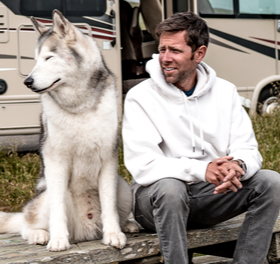What to See and Do
Hiking and Biking
Hart Bar Loop Trail
The Hart Bar Loop is a trail in the Warner Wetlands that loops from the Hart Bar Interpretive Site to the wildlife viewing blinds and back.
Length: 2 miles
Intensity: Easy
Crane Mountain National Recreation Trail
The Crane Mountain National Recreation Trail is a lengthy, difficult trail that runs through Oregon desert land.
Length: 37.5 miles
Intensity: Difficult
Fremont National Recreation Trail, Chewaucan Descent
The Chewaucan Descent of the Fremont National Recreation Trail is a descending part of the 130-mile Fremont National Recreation Trail best suited for mountain bikers.
Length: 10 miles
Intensity: Intermediate
Fishing and Boating
Crappie, catfish, bass, bullhead, and rainbow trout are commonly caught in the many lakes on the Warner Wetlands. Warner suckers are also living in most of the lakes, but they are only permitted for catch and release fishing since they are considered endangered. Boating is also possible on some lakes, especially Hart Lake, which has one of the highest and most consistent water levels year-round. Anyone who likes to kayak or canoe can check out the Warner Valley Canoe Trail as well, which is a marked waterway trail that flows for 10 miles during seasons and years when the lake water levels are higher than usual. Note that any motorized boat use is prohibited on any of the lakes or water trails.
Interpretive Touring
You can learn more about the Warner Wetlands, how they were formed, and their significance today by reading the interpretive signs placed by the BLM at the Hart Bar Interpretive Site, Warner Valley Canoe Trail, and Warner Valley Overlook. You can also read about the history of the area's hydrological cycle, a cycle that determines the amount of water in the area's lakes every year. Snowmelt and rainfall contribute to this, and the amount of water running into one lake often affects how much water will run into the next. For example, Cramp Lake has to be full in order to overflow into Hart Lake, and Hart Lake has to be full in order to overflow into the northern chain of smaller lakes.
Wildlife Viewing
Birdwatching is very popular at the wetlands in the spring and fall during migration season, and bird enthusiasts can see them best from the wildlife viewing blinds or the Warner Valley Overlook, both of which can be accessed via short hiking trails that are connected to the Hart Bar Interpretive Site. Species of raptors, waterfowl, shorebirds, secretive marsh birds, and songbirds call the area home year-round, while birds like ducks, geese, swans, and coots migrate through seasonally. American white pelicans, yellow rails, and snowy egrets also breed here.
Picnicking
Picnic shelters and tables are set up for visitors to use at the Hart Bar Interpretive Site, and picnicking is allowed in the wide spaces of the wildlife viewing blinds and Warner Valley Overlook when you want to watch the wildlife while you eat. No matter where you choose to have a picnic, be sure to pick up after yourself and leave no food behind for the birds and other animals.
OHV Riding
OHV riding is allowed at the Warner Wetlands, and riders find that the dunes between lakes are a great place for bumpy rides. However, all OHV riders are asked to stay on the marked, open trails at the Warner Wetlands only.





